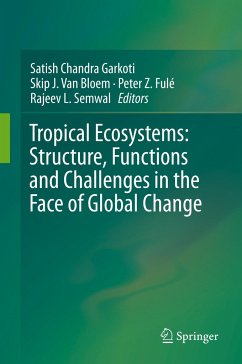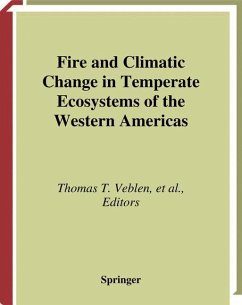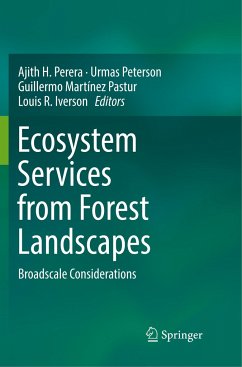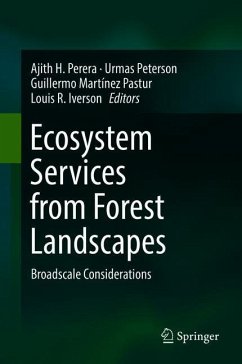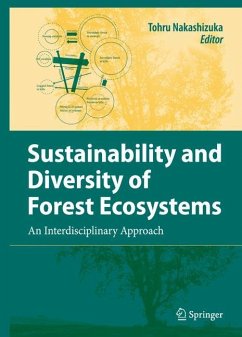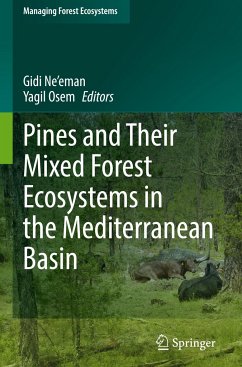
Tropical Ecosystems: Structure, Functions and Challenges in the Face of Global Change
Versandkostenfrei!
Versandfertig in 6-10 Tagen
129,99 €
inkl. MwSt.

PAYBACK Punkte
65 °P sammeln!
The book brings together research topics having a broad focus on human and climate change impacts on the terrestrial ecosystems in the tropics in general and more specifically from the most significant and vulnerable Himalayan ecosystem. A total of 16 contributions included in the book cover a diverse range of global change themes such as the impacts of changing temperature and precipitation on soil ecosystems, forest degradation, extent and impacts of invasive species, plant responses to pollution, climate change impacts on biodiversity and tree phenology, environmental changes associated wit...
The book brings together research topics having a broad focus on human and climate change impacts on the terrestrial ecosystems in the tropics in general and more specifically from the most significant and vulnerable Himalayan ecosystem. A total of 16 contributions included in the book cover a diverse range of global change themes such as the impacts of changing temperature and precipitation on soil ecosystems, forest degradation, extent and impacts of invasive species, plant responses to pollution, climate change impacts on biodiversity and tree phenology, environmental changes associated with land use, importance of traditional knowledge in climate change adaptation, timberline ecosystems, and role of integrated landscape modeling for sustainable management of natural resources.
The book is a collective endeavour of an international multidisciplinary group of scientists focused on improving our understanding of the impacts of global change on the structure and functioning of tropical ecosystems and addressing the challenges of their future sustainable management. We hope that the book will help researchers working in the areas of ecology and environmental science to update their knowledge. We also expect that natural resource managers and policy planners will find explanations for some of their observations and hypotheses on multiple global change factors impacting tropical ecosystems and especially Himalayan ecosystems.
The book is a collective endeavour of an international multidisciplinary group of scientists focused on improving our understanding of the impacts of global change on the structure and functioning of tropical ecosystems and addressing the challenges of their future sustainable management. We hope that the book will help researchers working in the areas of ecology and environmental science to update their knowledge. We also expect that natural resource managers and policy planners will find explanations for some of their observations and hypotheses on multiple global change factors impacting tropical ecosystems and especially Himalayan ecosystems.





